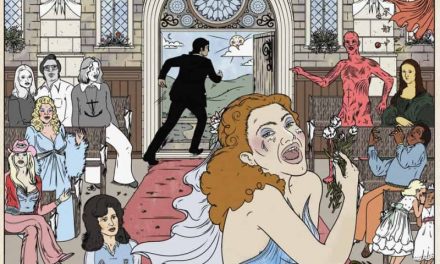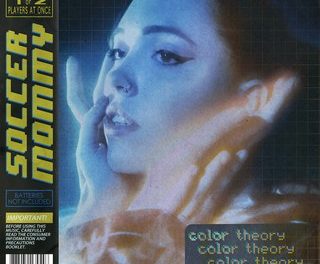The Beatles’ Anthology 4 releases on November 21, 2025, featuring different versions and takes of beloved songs. The album provides ravenous Beatles fans a fresh look at songs they’ve been listening to for years. It’s a fun exercise to go through the multitude of demos and takes from various recording sessions and then compare them to the versions that made their respective albums. You can always hear something new, but what about the songs and albums we have been listening to for decades? These new versions are all good and fun, but nothing beats the original albums and the songs that comprise them. Each and every album is a classic. But if that’s the case, if they are all classics, which one is the best? The most classic of the classics in The Beatles’ treasure trove of a discography? Well, here are my rankings for the Beatles’ studio albums, worst to best. Worst being relative, of course, there is no ‘bad’ Beatles album. On to the rankings.
No. 13 – Beatles For Sale
For 4 years straight, the Beatles had been busy and booked, touring, recording, appearing on radio and TV, etc. Burnout was bound to set in eventually. Unfortunately for Beatles For Sale, it was during its recording process that all that work caught up with the Beatles. Always busy, the band had little time to write new songs, resulting in six decent covers being on the album. The originals that were there were remarkably uninspired and lacked the usual Beatles creativity and craftsmanship. There are a few good songs, but overall, the album is just lackluster. For those reasons, Beatles For Sale is the last, the worst Beatles album.
No. 12 – Yellow Submarine
A soundtrack to the film of the same name, Yellow Submarine, is fine. It is certainly an experimental Beatles album, but just like the fifth track, “It’s All Too Much”. The eardrums are under constant barrage. The titular track is charming at first, but after one too many listens, it starts to become grating with all the sound effects and noises splattered through the song, an issue that plagues the album. The album is much too busy, and it often doesn’t work that well. Thus, Yellow Submarine is second to last.
No. 11 – With The Beatles
The Beatles’ second album, With The Beatles, lacks the star power of other albums. It is a collectively solid project, but it lacks ‘hits’. “All My Loving” is the lone standout track that screams Beatles. They released the singles “She Loves You” and “I Want to Hold Your Hand” beforehand, but didn’t include them on the album; these hit tracks could have really elevated the album, but with 8 originals and 6 covers, the album has plenty to listen to. However, most of it is not as engaging as their other work. With The Beatles is not a bad album by any means, but it is very filler-dense, landing it at No. 11.
No. 10 – Let It Be
Released a month after the world learned that The Beatles would be breaking up, Let It Be was recorded amongst heavy turmoil in the group and was initially abandoned to go and record Abbey Road. Eventually, production was finished, and the film was released in May of 1970. Envisioned as a more stripped-down, return to classic rock, Let It Be lacks some of the finesse and genius of other Beatles albums. An overall fine project, but it is held back by a clearly muddled vision and lack of cohesion. However, with the perennial hit “Let It Be’ and overall solid bluesy rock, the album is still a memorable addition to The Beatles’ discography.
No. 9 – Help
The tie-in album for the band’s second film, Help, is filled with a wide range of quality. Following the previously listed Beatles For Sale, Help is a marked improvement with much higher highs. Classics like “Yesterday” and “Ticket To Ride” carry the album, and as always, the overall sound of the Beatles continued to develop on the record. Some middling originals and 2 covers (the last two covers to be released on a Beatles studio album) keep the album from being truly great, leaving Help at No. 9.
No. 8 – Please Please Me
The album that started it all. Please Please Me was the world’s introduction to the Beatles. Like With The Beatles and Beatles For Sale, the album includes 8 original songs and 6 covers, but they all ooze the trademark pop stylings of the early Beatles. In retrospect, the album, full of energy, excitement, and excellent musicianship, was a clear sign that The Beatles would be special. Tracks like “Please Please Me”, “Love Me Do”, and “Twist And Shout” stand the test of time and are still some of the greatest pop songs of all time. Please Please Me remains as one of the top debut albums ever, yet there would be many more superior Beatles’ albums to come.
No. 7 – A Hard Day’s Night
Partially the soundtrack to the first Beatles movie and the first Beatles album that was composed entirely of originals, A Hard Day’s Night, is one of the most cohesive and energetic early albums from the Beatles. Still classic Beatles pop, the tracks have a rock n’ roll and Motown twinge. The titular single, “A Hard Day’s Night,” as well as “You Can’t Do That,” perfectly encapsulate the album’s overall sound and mature brashness. The album showed that the Beatles were light-years ahead of other English acts; they continued to evolve rapidly. The multitude of catchy hits on the album and the Beatles’ growing musical maturity showed signs that a lot more was to come.
No. 6 – Sgt. Pepper’s Lonely Hearts Club Band
A brilliant album, Sgt. Pepper’s is a classic in many regards, filled with wonderful songs, but as a whole, there are a few middling filler songs. A concept album in theory, the concept is loosely followed, diminishing some of its allure. However, it is still dotted with some exemplary Beatles classics and the–at the time–revolutionary recording techniques and production, solidifying its place at number 6. If we were factoring in style points, though, Sgt. Peppers would take the cake. I mean, you’ve got the classic album cover and the Fab Four’s killer threads, it is a top 3 Beatles’ aesthetic. But as mentioned, on a musical basis, it doesn’t stack up to other Beatles projects. It is too much a product of its time and hasn’t aged as gracefully as some of their other works. Sgt. Pepper’s will never be forgotten, but it only slots in at 6.
No. 5 – Rubber Soul
The album that transformed The Beatles forever. Rubber Soul is the first bona fide masterpiece in their discography, and a seismic leap in quality and artistic merit. With a folk-rock sound, inspired by artists like Bob Dylan, the album is filled with soothing melodies, soft instrumentation, and lyrical and musical maturity. Rubber Soul confirmed that The Beatles weren’t just boy band heartthrobs, but full-on musicians. Tracks like “Girl” and “In My Life” are the pinnacle of The Beatles’ love song era, and demonstrate the full evolution of their early sound before their shift to a more experimental and exploratory sound. The pinnacle of their early sound for me, Rubber Soul is far and away their best pre-1966 album, but some okay filler keeps it from climbing any farther.
No. 4 – The White Album
The only double album released by The Beatles, The White Album, is a behemoth. However, its 93-minute length is a gift and a curse. With so many songs, the range of quality and merit is quite large. The album contains a top 5 Beatles songs in “While My Guitar Gently Weeps” alongside classics like “Blackbird” and “Happiness Is A Warm Gun”, but then contains the abrasively obnoxious “Honeypie”. The album is sprawling and very sonically diverse. The album does lack a sense of cohesion, but many of the songs are still of extreme quality. There are many standouts, but there are quite a few skips as well. Overall, however, it is a fantastic album, securing its spot in the top 4.
No. 3 – Magical Mystery Tour
My favorite blend of “Beatles Pop” and psychedelia. Often disregarded as an “album” due to its origins (a few singles and a movie soundtrack heaped together), but I’m counting it. Magical Mystery Tour is just hit after hit. There isn’t a single song I don’t love. Tracks like “I Am The Walrus” and “Strawberry Fields Forever” are some of the most iconic Beatles’ tunes ever. The whole album is lovingly crafted and a lot of fun. Every song demonstrates unique production approaches and styles that are mind-blowing. After pushing instrumentation farther and farther in Revolver and Sgt. Peppers, the Beatles tried a new approach while still sticking to their guns. The non-traditional strong structure of many of these songs keeps them fresh on every listen. The overall sound of the album is hard to pin down, and that is why it is so great. A lot of variety. You can hear the experimental psychedelia of Sgt Pepper’s, the soft pop of Rubber Soul, and the future bluesy sound of The White Album, all on one album. It is a hit-packed, sonically intriguing, 36-minute-long LP.
No. 2 – Revolver
It was a close race for the No. 1 spot, and unfortunately for Revolver, it ends up at No. 2. I’d do 1A and 1B if I could, but that goes against the nature of this list. Filled with some of the most timeless and individually fantastic Beatles songs, Revolver stands out even among other Beatles albums. However, a few duds sprinkled throughout the album keep it from the number one spot. Their first foray into psychedelic musical experimentation, the album was meant to shed the Beatlesmania pop image and push their music to new heights, and it does so fantastically. The Beatles always had good songwriting and instrumentation, but Revolver is when it all came together. Their sound matured so drastically, and they truly became the cutting-edge, musical geniuses and explorers we recognize as ‘The Beatles’. Yes, you heard some of it in Rubber Soul, but Revolver was the culmination of all their previous music and set them on their track to become the most influential band of all time.
No. 1 – Abbey Road
The most recognizable album in the world. Everyone knows the cover and everyone knows “Here Comes The Sun”. But these are not the only two factors that make Abbey Road stand out strikingly when thinking of great Beatles albums. A long, flowing menagerie of Bluesy-Proggressive Rock Pop, and a musically progressive and innovative project, Abbey Road is one of the most influential albums of all time. Songs like “Maxwell’s Silver Hammer” and “Octopus’s Garden” are comparatively weak, but the rest of the album is artistic achievement personified. The aforementioned “Here Comes The Sun”, “Come Together”, and “The Long One” are The Beatles firing on all cylinders. It is a musical arrangement that Bach would be jealous of. This album really captures the genius of the Beatles, and that is why it is No. 1, my quintessential Beatles album.
Being born in 2005, with only two of the Beatles still alive and 35 years after their last album, they were most certainly before my time. My rankings are undoubtedly clouded by modernity and the drastically different experience of the 21st Century; however, I was raised on the Beatles. Some of my fondest memories are dancing around to “Come Together” with my grandfather. The Beatles have been a beloved constant throughout my entire life, and they are easily my favorite band of all time. Every album holds a special place in my heart, even if they were made long before I plopped into the world. I know the Beatles blew minds back in the day, innovating musically like no other, and I might not have the insight of someone who heard the Beatles for the first time in the ’60s, but I am fortunate enough to hear their influence everywhere in music now. Being able to look back on their work, which was so original and inspired at the time, and overlaying that on modern music is a mind-blowing endeavor. The groundbreaking techniques, songwriting, and experimentation that the Beatles trailblazed are now industry standards. The Beatles’ music truly transcends time and changed the landscape of music forever. Their release dates may say 1962, 1969, etc, but sonically, they are still relevant and they still kick major ass.
My name is Ian Mahoney, a writer for WVUA. I am a civil engineering major with a minor in history. Three of my favorite bands are The Beatles, The Strokes, and Led Zeppelin, but I love all sorts of music ranging from Jazz to Rap to Bossa nova.








